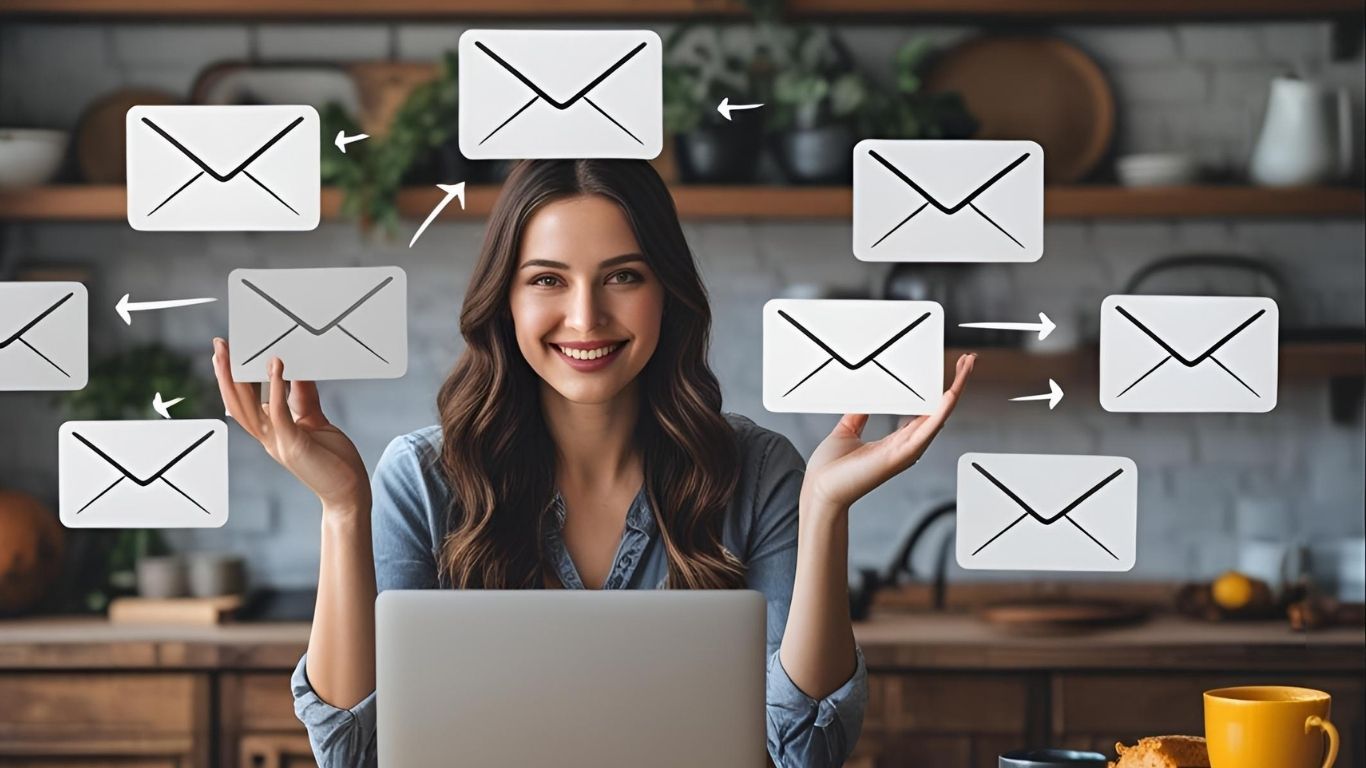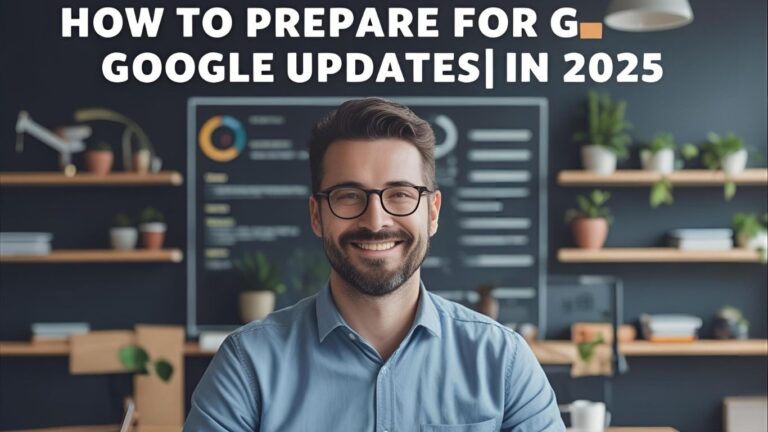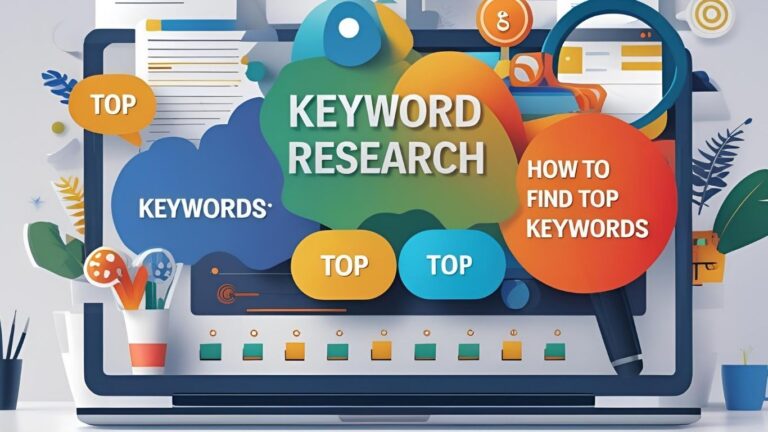Master Email Marketing Strategies with 7 Simple Steps to Boost Engagement #EmailMarketing #MarketingStrategies #BoostEngagement
Email Marketing Strategies: How to Master Campaigns in 7 Simple Steps
In the digital age, where information floods every corner of the web, email marketing strategies remain one of the most effective tools in a marketer’s arsenal. It’s not just about sending emails; it’s about crafting messages that resonate, engage, and drive action. With the right techniques, email marketing can be a powerhouse that grows your business, boosts customer loyalty, and brings measurable results.
As we explore email marketing strategies, think of it like planting seeds in a garden. Some grow quickly, others need more time, but with consistent care, every strategy nurtures long-term growth. If you’ve ever felt overwhelmed by the idea of creating an email campaign, don’t worry—this guide will break down email marketing strategies into simple steps that even beginners can follow.
Let’s dive into the art and science of email marketing.
Email Marketing Strategies: The Core of Digital Engagement
Before we get into the details of the various email marketing strategies, let’s start with the essentials. Email marketing is a direct line to your audience, offering unparalleled potential to engage, nurture, and convert. Unlike social media or search engine algorithms, you control the content, timing, and frequency of your emails.
But how do you begin? The answer lies in building a solid foundation. From list building to personalization, every email marketing strategy plays a crucial role in driving your success. Here’s how you can get started:
Building a Strong Email List
A strong email list is the backbone of any successful email marketing strategy. It’s not just about collecting emails; it’s about building a list of engaged, interested recipients who want to hear from you. The bigger your list, the bigger your potential audience, but that doesn’t mean you should focus only on numbers.
How to Collect Emails Efficiently
Think of your email list as a community. You want people who genuinely care about your content, not just random names in your database. Here are a few tips to build that authentic list:
Opt-In Forms: Place opt-in forms on your website, landing pages, or blog posts. These are the easiest ways to collect subscribers.
Lead Magnets: Offer a freebie like an e-book, checklist, or exclusive content in exchange for their email.
Social Media Integration: Use your social channels to promote your email sign-up form.
List Segmentation Best Practices
Once you have a solid email list, segmentation is key. Segmentation helps you send the right message to the right person, increasing your chances of conversion. Here are a few segmentation strategies:
Demographics: Age, location, gender, etc.
Purchase History: People who’ve bought from you may respond differently to new offers than those who haven’t.
Engagement Level: Divide your list into active and inactive subscribers for more personalized outreach.
Designing Engaging Emails
Now that you have a list, it’s time to think about the design. A beautifully designed email can significantly improve engagement, making it easier for your subscribers to read and interact with your content. It’s like putting your best foot forward every time.
The Power of a Strong Subject Line
The subject line is your first impression. It’s the hook that gets your reader to open your email. Without an eye-catching subject line, even the most well-crafted email will get ignored. A good rule of thumb is to keep it short, compelling, and relevant. For example, “Get 20% Off Today Only!” or “Your Exclusive Content Inside!”
Visual Design Tips for Better Engagement
No one likes a cluttered email. Make sure your design is visually appealing and easy to read. Here are some tips:
Keep it Simple: Stick to a clean layout with clear fonts and a balanced amount of text and images.
Mobile Optimization: With more than half of all emails opened on mobile devices, ensure your email is mobile-friendly.
Call to Action (CTA): Your CTA should be bold, clear, and easy to find. It’s the button or link that tells your readers what to do next, so make it stand out!
Crafting Compelling Email Content
The content of your email is just as important as the design. This is where you truly engage your audience and convince them to take action. Compelling content isn’t just about selling; it’s about telling a story that resonates.
Writing Persuasive Copy
Effective email copy is short, sweet, and to the point. Your subscriber’s time is precious, so make every word count. Use simple language, focus on benefits, and don’t forget to address your reader directly. For example:
“You’ve been waiting for this! Our new product is finally here, and we can’t wait for you to try it.”
Call to Action Strategies
A well-placed CTA can make all the difference. Whether it’s a button that says “Shop Now” or “Get Your Free Trial,” your CTA should be irresistible. To make it even more compelling, use action verbs and create a sense of urgency, like “Don’t Miss Out” or “Limited Time Offer.”
Personalization Techniques
Personalization in email marketing is crucial. When people feel like an email is specifically for them, they’re more likely to engage with it. The simplest form of personalization is addressing the recipient by their first name, but there are many other ways to make your emails more personal.
Addressing Your Audience by Name
Using the subscriber’s first name in the subject line or greeting can drastically increase engagement. People love to see their name, and it creates a connection right from the start.
Using Customer Data for Tailored Campaigns
The more you know about your subscribers, the better you can tailor your emails to their needs. Use their browsing behavior, purchase history, and preferences to send highly personalized offers. For example, if someone bought a pair of running shoes from your store, send them an email with complementary products like socks or workout gear.
Tracking Email Campaign Performance
You can’t improve what you don’t measure. Monitoring the performance of your email marketing strategies is vital to understanding what works and what doesn’t. The key metrics to track include open rates, click-through rates (CTR), conversion rates, and more.
Key Metrics to Monitor
Each metric tells you something valuable about your email campaigns:
Open Rate: How many recipients opened your email? This metric helps you gauge the effectiveness of your subject line.
Click-Through Rate (CTR): How many recipients clicked on the links in your email? This is an indicator of how compelling your content is.
Conversion Rate: How many recipients completed the desired action (e.g., made a purchase)? This metric tells you if your email drives results.
Tools for Email Campaign Analytics
There are several tools that can help you track these metrics, such as:
Mailchimp: Offers in-depth analytics and A/B testing.
HubSpot: Provides detailed insights into your email performance and automates follow-up emails.
Google Analytics: Allows you to track how email traffic converts on your website.
Optimizing Open and Click Rates
While getting an email opened is important, it’s equally important to get people to click on the links inside. This is where testing and optimization come into play.
A/B Testing for Email Success
A/B testing is the process of sending two variations of an email to different segments of your list to see which one performs better. You can test things like:
Subject Lines: Test different wordings to see which gets the highest open rate.
Call to Action: Test different CTAs to see which one leads to more clicks.
Subject Line Optimization
Your subject line is often the deciding factor in whether or not someone opens your email. Experiment with different approaches, such as:
Curiosity-Based Subject Lines: “You won’t believe what’s inside!”
Urgency: “Last chance to get 50% off!”
Personalized: “Hey [First Name], check out your special offer!”
Understanding Bounce Rates
Bounce rates are a crucial indicator of how well your emails are being delivered. A high bounce rate means that your emails aren’t reaching their destination, which can hurt your sender reputation.
Types of Email Bounces
There are two types of email bounces:
Soft Bounces: Temporary issues, like a full inbox or server problems.
Hard Bounces: Permanent issues, such as invalid email addresses.
How to Reduce Bounce Rates Effectively
To reduce bounce rates:
Clean Your Email List: Regularly remove invalid or inactive email addresses.
Use Double Opt-In: This ensures that subscribers actually want to receive your emails.
Authenticate Your Emails: Set up SPF, DKIM, and DMARC records to improve deliverability.
Advanced Email Marketing Strategies
Once you’ve mastered the basics, it’s time to level up your email marketing strategies with more advanced techniques.
Automating Email Campaigns
Automation allows you to send targeted messages to your audience based on their actions or behaviors. For example, you can automatically send a welcome email when someone subscribes or a follow-up email after a purchase. Automation saves time and ensures timely, relevant communication.
Integrating Email Marketing with Social Media
By integrating your email marketing strategies with social media, you can reach more people and drive additional engagement. For example, share snippets of your latest email in your social media posts and encourage followers to subscribe.
Retargeting Campaigns
Not everyone will buy on the first email you send. Retargeting is a strategy that allows you to follow up with people who interacted with your emails but didn’t convert.
How to Set Up Retargeting Emails
Retargeting involves sending emails to people who have opened or clicked on your previous emails but haven’t taken the desired action. You can create a special offer or reminder to bring them back.
Benefits of Retargeting in Email Marketing
Retargeting boosts conversion rates by reminding prospects of your product or service. It creates another touchpoint, increasing the chances of closing the sale.
Staying Compliant with Email Marketing Laws
With the rise of privacy concerns, email marketing laws like GDPR and CAN-SPAM have become crucial. Understanding these laws ensures that your campaigns remain ethical and legal.
Understanding GDPR and CAN-SPAM
These laws regulate how you collect, store, and use email data. To comply with GDPR, for example, you need explicit consent from your subscribers before sending marketing emails.
Best Practices for Privacy and Consent
Always give subscribers an easy way to opt-out, respect their data privacy, and be transparent about how you’ll use their information.
Enhancing Deliverability
A key to success in email marketing strategies is ensuring your emails land in the inbox and not in the spam folder. Here’s how to improve deliverability:
Avoiding Spam Filters
Spam filters are strict, so avoid using phrases like “free” or “act now.” Also, ensure your email doesn’t look too much like an advertisement.
Building a Reputation with ISPs
Internet Service Providers (ISPs) track your sending reputation. Sending high-quality, relevant content regularly helps establish trust and improves deliverability.
The Future of Email Marketing
As technology advances, email marketing strategies continue to evolve. Keep an eye on these trends to stay ahead:
The Role of AI in Email Marketing
Artificial intelligence can help you automate personalization, optimize subject lines, and even predict customer behavior, making your campaigns more efficient.
Trends to Watch in Email Marketing
Expect to see more automation, hyper-personalization, and integration with other platforms, as businesses look for ways to create more seamless experiences for their subscribers.
Mobile-First Email Strategies
With the growing reliance on smartphones, mobile-first design has become a must in email marketing strategies.
Designing for Mobile Devices
Make sure your emails are responsive and easy to read on small screens. Use larger fonts, single-column layouts, and quick-loading images.
Importance of Mobile Optimization
A mobile-optimized email increases the likelihood of your recipient engaging with your content and taking action.
Conclusion
Email marketing strategies are crucial for growing your business in today’s competitive digital landscape. By building a strong list, designing engaging emails, tracking performance, and utilizing advanced techniques, you’ll be on your way to creating campaigns that not only get opened but also drive results. Remember, consistency is key—keep testing, learning, and refining your approach to see continuous improvement.
Ready to get started? Implement these strategies today, and watch your email marketing soar!
Bullet-Point Summary:
- Email marketing strategies remain a crucial tool for building customer relationships and driving sales.
- Start by building a strong email list, using opt-in forms and lead magnets.
- Segmentation of your list ensures personalized and relevant content for each subscriber.
- Design engaging emails with attention-grabbing subject lines and mobile-friendly layouts.
- Use compelling content and clear calls to action to increase conversions.
- Personalize emails using customer data to increase engagement and drive sales.
- Track the performance of your emails by monitoring open rates, click-through rates, and conversion rates.
- Use A/B testing to optimize subject lines and CTAs.
- Lower your bounce rate by regularly cleaning your email list and verifying email addresses.
- Implement advanced strategies like automation and social media integration to scale your campaigns.
- Utilize retargeting to reach users who haven’t converted yet.
- Stay compliant with email marketing laws like GDPR and CAN-SPAM.
- Ensure high email deliverability by avoiding spam filters and building a solid reputation with ISPs.
- Follow trends such as AI and mobile-first design to stay ahead in email marketing.
Frequently Asked Questions (FAQs)
1. What is email marketing?
Email marketing involves sending targeted emails to a group of subscribers to build relationships, promote products, or drive conversions. It’s one of the most effective digital marketing strategies when done correctly.
2. How do I build an email list?
To build an email list, offer valuable content or incentives, such as a free e-book or discount, in exchange for their email addresses. Use opt-in forms on your website, landing pages, and social media.
3. What is email segmentation?
Email segmentation is the practice of dividing your email list into smaller groups based on demographics, behaviors, or interests. This allows for more personalized and relevant content delivery.
4. How often should I send emails to my subscribers?
It depends on your audience and goals. However, consistency is key. Whether weekly, bi-weekly, or monthly, ensure your emails are regular but not overwhelming.
5. What should my email subject line include?
Your subject line should be short, catchy, and to the point. It should evoke curiosity or urgency to encourage recipients to open the email.
6. How do I track the success of my email campaigns?
Track metrics like open rates, click-through rates (CTR), conversion rates, and bounce rates. These provide insight into how well your campaigns are performing.
7. What is A/B testing in email marketing?
A/B testing involves sending two versions of an email to see which one performs better. You can test elements like subject lines, CTAs, or content to optimize future campaigns.
8. How do I reduce my email bounce rate?
To reduce bounce rates, clean your email list regularly, remove inactive or invalid email addresses, and use double opt-ins to confirm subscriptions.
9. What is email automation?
Email automation allows you to set up pre-scheduled emails based on triggers like customer actions. It saves time and delivers relevant content to the right person at the right time.
10. How can I improve my email open rates?
Improve open rates by writing compelling subject lines, personalizing emails, and sending at the optimal time. A/B testing also helps identify what resonates best with your audience.
11. How do I stay compliant with email marketing laws?
Ensure that you’re familiar with laws like GDPR and CAN-SPAM. Get explicit consent from subscribers, include an easy opt-out option, and be transparent about data use.
12. What is a good call to action (CTA)?
A good CTA is clear, concise, and action-oriented. Use phrases like “Shop Now,” “Learn More,” or “Get Your Discount” to guide recipients toward your goal.
13. How do I avoid my emails going to the spam folder?
To avoid the spam folder, ensure that your content is relevant and free of spammy words, authenticate your email domain, and keep your lists clean and up-to-date.
14. What are the best tools for email marketing?
Popular email marketing tools include Mailchimp, HubSpot, and ConvertKit. These tools help with list management, campaign tracking, and automation.
15. Can I use email marketing for eCommerce?
Yes! Email marketing is perfect for eCommerce. Use it to send promotional offers, product recommendations, and cart abandonment reminders to drive sales.
Explore These Valuable Resources
Here’s a curated list of outbound links that provide extra insights, tips, and expert knowledge on email marketing strategies and digital marketing. These resources will help you deepen your understanding and stay ahead in the industry.
Mailchimp’s Email Marketing Resources
Explore Mailchimp’s extensive library for email marketing guides, templates, and best practices. Whether you’re a beginner or an expert, this resource provides practical tools for every stage of your campaign.
HubSpot Email Marketing Blog
HubSpot is a recognized leader in digital marketing, and their blog offers in-depth articles on email marketing strategies, tools, and trends. Learn from their comprehensive resources to enhance your campaigns.
ConvertKit’s Guide to Email Marketing Automation
If you’re looking to get started with email automation, ConvertKit’s guide is a must-read. It provides actionable steps on automating your email workflows to save time and boost engagement.
Neil Patel’s Email Marketing Tips
Neil Patel offers expert advice on building your email marketing strategy from scratch. His posts dive deep into the key strategies you need to succeed and drive ROI through email.
AWeber’s Email Marketing Learning Center
AWeber’s Learning Center is a treasure trove of tutorials, guides, and best practices for email marketers of all experience levels. Start from the basics or level up your email skills with advanced strategies.
OptinMonster’s Email Marketing Resources
OptinMonster is a leading tool for increasing conversions. Their blog offers great insights into list building, optimizing forms, and creating engaging email campaigns that capture attention.
Campaign Monitor’s Email Marketing Academy
With Campaign Monitor’s Email Marketing Academy, you can learn everything from email design to analysis, helping you implement the best strategies for engagement and growth.
Content Marketing Institute: Email Marketing Articles
Content Marketing Institute offers a range of articles that combine content marketing and email marketing strategies. Dive into their tips for creating content that drives results in email campaigns.
Google’s Best Practices for Email Marketing
Google provides best practices for email marketing that ensure your emails land in inboxes and avoid spam filters. These guidelines are crucial for achieving strong email deliverability.
Litmus’ Ultimate Guide to Email Testing
Litmus provides tools for testing emails across platforms, ensuring your designs work across all devices and email clients. Their guide to email testing will help you avoid errors and enhance user experience.
By visiting these recommended resources, you’ll be equipped with the knowledge, tools, and strategies needed to elevate your email marketing campaigns. Whether you want to optimize your subject lines, learn the ins and outs of segmentation, or dive deeper into automation, these links will provide all the insights you need. Happy learning!
Blog Recommendation:
For more in-depth insights into digital marketing and email marketing strategies, check out Rizwan’s blog where you can find expert advice and actionable tips to level up your campaigns.
Related Links
Explore the range of services that can elevate your business’s digital presence.
Check out the portfolio to see how we’ve helped other businesses succeed.
Ready to shop? Visit our shop for products that will give your business the boost it needs.
Connect with me professionally on LinkedIn for networking and opportunities.







